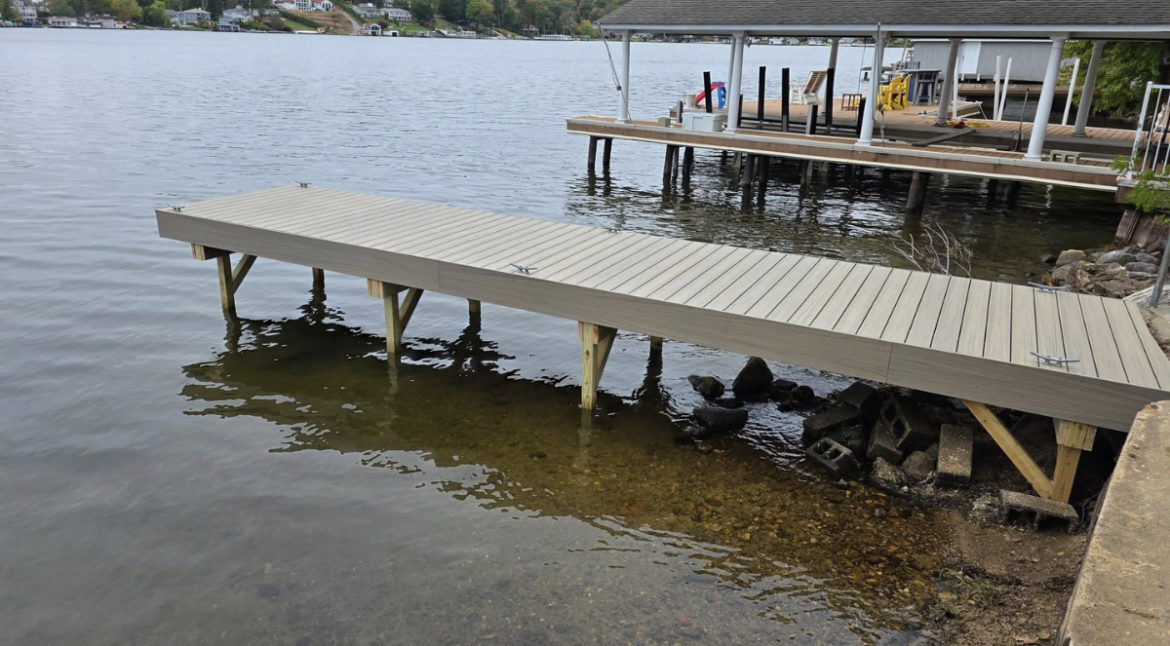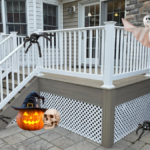Secure your holiday dock! Inspect the structure for rot/damage, ensure electrical safety, add non-slip surfaces, and stock emergency gear.
For boat owners, the holidays are a wonderful time of year. Your dock is the starting point for your aquatic celebrations, whether you’re organizing a picturesque Christmas cruise or throwing a New Year’s Day party by the water. However, you must make sure that this essential structure is not only stunning but also totally safe and secure before the fun starts.
Particularly when you have visitors and seasonal distractions, a dock that is structurally weak or inadequately furnished is a major liability. The greatest investment you can make for peace of mind this season is a pre-holiday safety check; it’s not just a recommendation.
Verification of Structural Integrity: The Basis for Safety
A comprehensive structural assessment is the first and most important step. The stability of your dock must be undeniable because heavy use and cold water can reveal flaws.
- Walkways and Decking: Examine each board carefully. Check for warping, rot, splinters, or cracks that could lead to trips and falls. Any loose or damaged planks should be replaced right away.
- Fasteners and Hardware: Examine every bolt, screw, and connection plate, paying particular attention to the joints where sections join or the dock meets the shore. Tighten any bolts or nuts that are loose. To preserve structural integrity, check for corrosion or rust and replace any damaged marine-grade hardware.
- Supports and Pilings: Check the flotation devices, cribs, or pilings. Are the pilings securely embedded in the ocean floor? Do the floats have no leaks or cracks? Any damage that is visible here needs to be fixed right away by a qualified marine construction specialist.
For a consultation, give Steel Penn a call at (973) 459-1357!
Electrical Safety: Distinguishing Water from Power
Water and electricity are a deadly combination. During the holidays, there is a greater chance of an electrical shock or ground fault due to the use of charging devices and festive lights.
Make sure that every outlet on your dock is protected by a Ground Fault Circuit Interrupter (GFCI). To make sure they trip immediately in the case of a malfunction, test them once a month.
- Weatherproofing: Every electrical connection, junction box, and wiring needs to be rated for outdoor and marine use and be weatherproof. Standard indoor extension cords are not made to withstand moisture, so never use them on the dock.
- Professional Wiring: Always use a licensed marine electrician to install permanent lighting or a boat lift. Never try running permanent wiring on your own.
Safe Footing: Preventing Slips and Falls
Wet docks are slick by nature. For visitors who might be wearing different shoes or navigating the dock in low light, lowering the chance of slips is crucial.
- Non-slip surfaces: Clean all algae, mildew, and wet debris from the surface. Think about putting anti-slip tape or a commercial non-slip coating on stairs, ramps, and high-traffic areas.
- Proper Lighting: Install low-voltage LED or solar lighting along the dock’s perimeter, steps, and mooring posts. For safe entry and exit, adequate lighting is essential, particularly during the season’s darker, earlier sunsets.
- Get Rid of the Clutter: Avoid trip hazards on the dock. Store tools, fishing equipment, and toys in safe, off-dock storage boxes and neatly coil all hoses and dock lines.
💡 Did You Know?
Even a small amount of current leaking into the water from a malfunctioning dock wiring system can result in paralysis and drowning without any obvious signs of electrocution, according to the Electric Shock Drowning (ESD) Prevention Association. A routine electrical inspection can literally save lives.
Emergency Equipment: Prepared for Any Situation
On or near the water, a safe dock is always ready for an emergency.
- Throw ropes and life rings: At strategic locations along the dock, hang a life ring (or life buoy) in a vibrant color and make it easily accessible using a long, buoyant throw rope.
- Ladders for docks: For a speedy water exit, make sure you have strong, simple-to-use ladders securely fastened to the dock’s side. Verify their security by testing them.
- Fire Extinguisher: Keep a minimum of one marine-rated fire extinguisher installed in an easily accessible and noticeable area.
Don’t let an avoidable mishap spoil your vacation. A safe dock is one that has been properly maintained and inspected by professionals. The time to take action is now if your inspection finds corrosion or damage, or if you have concerns about the electrical or structural safety.
For a consultation, give Steel Penn a call at (973) 459-1357.
Frequently Asked Questions (FAQs)
How often should I have my dock’s electrical system professionally inspected?
At a minimum, your dock’s electrical system should be inspected by a certified marine electrician annually, preferably before the peak boating season or before a major holiday gathering.
What is the most common safety hazard on private docks?
The most common hazards are slips and falls due to wet, unstable, or algae-covered decking, and electrical hazards from improper wiring or faulty GFCI outlets. Structural issues like loose boards or rotting support pilings are also a high-risk factor that should be addressed immediately.




